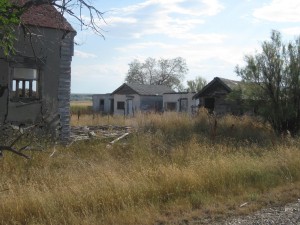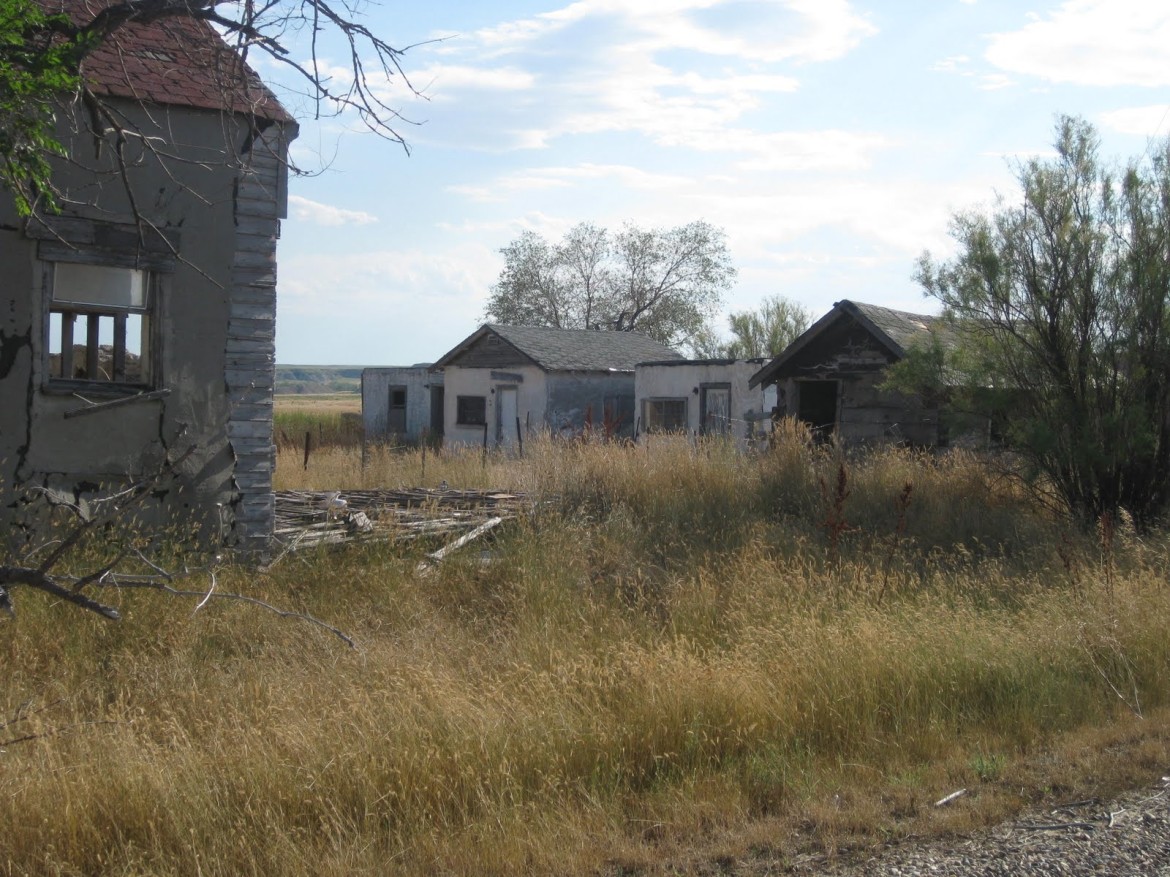
Photo by wessmillerrv.blogspot.com
A recent report on rural America finds staggeringly high rates of poverty among young people, a growing trend the authors describe as widespread and increasing.
The report, Why Rural Matters 2011-12, found that almost 41 percent of the nation’s rural students are living in poverty, with 10 states posting rural student poverty rates of more than 50 percent. Although nearly half of the country’s school districts are considered rural using data from the National Center for Education Statistics, the report -- issued by the Rural School and Community Trust, a Washington, D.C.-based non-profit -- finds that, on average, rural districts are receiving only one-fifth of state education funds.
With an estimated 80 percent of its rural student population participating in federally subsidized meal programs, New Mexico had the highest rate of impoverished rural students of any state in the county. An additional 12 states are listed within the report as having rural education conditions requiring “urgent” attention from legislators.
The organization’s Communications Director, Robert Mahaffey, called the findings “disturbing.”
“The levels of poverty among these children are increasing,” Mahaffey said. “The economic circumstances for a significant percentage of these children are not good.”
Mahaffey said that since the poorest districts of rural America are bunched in regions throughout the country, he advocates policymaking through a provincial lens.
“There are about 9,100 rural school districts in the country,” he said. “If you look at 10 percent of those districts that are the poorest, they’re clustered in certain parts of the country, across state boundaries. The Mississippi Delta, the Rio Grande Valley in Texas and Mexico, the San Joaquin Valley in California; the Mississippi Delta is probably the most pronounced, because they have school districts that are continuous, and they’re in Louisiana, Arkansas and Missouri.”
Mahaffey called for a diversion from “state-by-state” education policies, saying that states should instead cooperate and develop “positive impact” across state lines.
“It’s an issue of inequity, social justice and access to services for the least served populations,” he said. “That’s why the federal government role in education policy is so critically important.”
According to the latest findings, the Community Trust estimates that approximately 9.6 million pupils in America can be classified as rural students. Additionally, 33 percent of the nation’s schools are considered “rural,” with almost half of the nation’s school districts deemed “small and rural” under NCES criteria.
With a rural student high school graduation rate of only 63 percent – with a rural student poverty rate nearly as high – Mississippi is listed as the report’s highest priority rural state, followed by Alabama, Arizona, South Carolina and Tennessee.
With more than half a million students attending classes in rural schools, Georgia has the third largest absolute rural student enrollment estimates in the nation. According to the Why Rural Matters assessment, only six out of 10 rural students in the state are expected to graduate from high school.
For the last two years, Lisa Schnellinger has researched the demographics of the North Georgia area, while producing tutorials for the University of Georgia regarding techniques for covering and reporting on rural poverty. While covering Pickens County, Ga. – a county where more than 15 percent of the total juvenile populations lives under the poverty line – she noted a sharp contrast between the rural wealthy and rural impoverished.
“It has a very wealthy eastern half and a pretty impoverished western half,” she said. “It’s like two different worlds.”
She said that while the eastern half of Pickens County consists of fairly affluent neighborhoods, including a number of gated communities, she said the western landscape consists mostly of trailers and mobile homes.
“They’re basically fortunate that the weather isn’t worse here, because they don’t look like they would hold up,” she added. “They’re just kind of tucked into these smaller, rural roads, where if you’re traveling through the county on the main road, they really are kind of invisible.”
Schnellinger did a week of guest teaching at the local high school, and made several observances about the community and its demographics.
“What is striking to me is that there is a big divide between people who are locals, natives to the area in these rural counties, and people like me, who are outsiders, who came in later,” she said.
“It’s not that people are unfriendly. They’re great, they’re really nice up here, but they know I’m not from here, and it takes some time for them to trust somebody who maybe isn’t from here, because so often, they have been judged by people like me.”
Despite the pervasiveness of poverty in the area, Schnellinger said that the students she observed were reluctant to address their economic conditions.

Photo by Pam Simpson | activerain.com
“It’s very difficult as an outsider to be accepted in that way, to have someone take you into their confidence in terms of talking about how difficult their lives are,” she said. “They don’t like to talk about it, especially the kids at the age group I knew. They just want to fit in, the last thing they want is to let anybody know they’re family’s not doing very well.”
Mahaffey likewise said one of the largest issues surrounding rural poverty pertains to public perceptions.
“If you poll the public, and this has been consistent over the years, and you ask them to give a sense of what they think rural America is, there are really two predominant themes that emerge,” Mahaffey said. He then described two divergent, stereotypical views of rural America, one of them an idyllic, “Norman Rockwellian” burgh and the other a wasteland of abject poverty, ill health and illiteracy.
“The vast majority of rural America is much more diverse, much more culturally rich, much more engaged in building community and where people are deeply committed to the success of their family,” he said. “We work very hard to break down some of those stereotypes, [because] those stereotypes influence public policy.”
The Why Rural Matters report also notes that rural education enrollment figures have increased since the organization’s 2008-2009 findings. Mahaffey said that the rural classrooms are also becoming increasingly multicultural due to immigration and migration from urban areas.
“Children are becoming more and more diverse,” Mahaffey commented. “There is a significant increase in the number of children of color that are going to schools in rural places, as well as a wide range of ethnic groups and migrant groups.”
According to research findings, minority pupils now make up more than a quarter of the rural student body. The Rural School and Community Trust findings indicate that the number of Hispanic students in the nation’s rural schools have increased more than 150 percent since 2009.
Mahaffey said that effects of the ongoing recession are almost impossible to overstate in terms of influence on the state of contemporary rural education.
“With respect to the recession across America in education, [it has] been critical to the point of devastating on certain levels,” he said. “If it wasn’t for the stimulus package and the American Reinvestment and Recovery Act, hundreds of thousands of teachers would have been let go. State budgets across the country are in real difficult shape around education, and so are support services and professional development.”
Mahaffey said that school funding system reforms are essential in curbing “inequities” in how resources and support are allocated to rural areas.
“Basically, we fund schools based on your ZIP code, and that is inherently unfair for kids who live in high poverty places,” he said. “It’s a critically important issue, so when the recession hit, with the drop in property value and others things that have impacted those revenue streams for schools, it’s been a real challenge.” Mahaffey noted that the three states that have seen the most vocal opposition from teachers to public employee collective bargaining agreements – Indiana, Iowa and Wisconsin – are all states with high percentages of students attending classes in schools classified as rural.
Mahaffey said that Title I of the Elementary and Secondary Education Act, which implements a funding stream that provides resources to schools based on a per-people-spending formula, is unfair to students living in rural areas.
“This is a top public policy issue for us,” he said. If you’re a poor kid in a low population place, there’s less per-people-spending for kids there [than there is] in a higher concentration poverty place.”
Mahaffey said that he supports a “community school model” for rural school districts, with “wraparound, integrated” incentives such as health care and legal services provided for teachers that work in rural communities.
“We focus on initiatives, broadly speaking, to grow your own,” Mahaffey stated. He said that programs that develop and train former rural students, with additional “point of delivery” services included, could help teacher retention rates in impoverished areas.
“A lot of rural schools are already living that model,” he said. “Many of them, interestingly enough, go back and teach at schools they went to as children.”
Mahaffey concluded by criticizing politicians that may consider education budgets as potential targets heading into the 2012 election cycle.
“It’s a bit disingenuous on the part of public officials, and I don’t care if they’re local, state or federal, that they make a grandstanding point about the fact that our children are our future,” he stated. “And then, not fund education programs.”
“There’s a real disconnect in my mind about how people can make those public statements and then not carry on with their support for investing in education.”
The Why Rural Matters report assessed non-urbanized areas based on a number of indicators, including longitudinal gauges and educational policy contexts measuring, among other factors, rural instructional expenditures per pupil and state revenue per local dollar.
